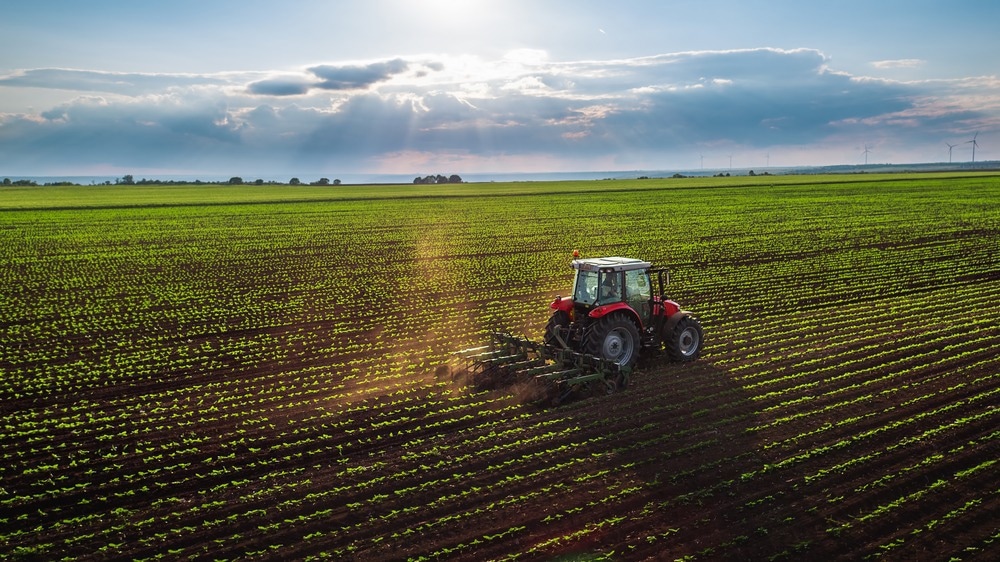Recent research reveals that farmers around the globe could help the world meet a major carbon removal goal set by the Intergovernmental Panel on Climate Change (IPCC) by incorporating crushed volcanic rocks into their fields. The wet, warm tropics are also highlighted as one of the most enticing locations for this climate intervention strategy, according to the study.

Image Credit: Valentin Valkov/Shutterstock.com
The research is the first to provide a global estimate of the potential carbon dioxide drawdown from basalt application on agricultural fields around the world. The study was published in Earth's Future—AGU’s journal for interdisciplinary research on the past, present, and future of the planet and its inhabitants.
This type of climate modification is known as enhanced rock weathering. It makes use of the weathering process, which naturally sequesters CO2 in carbonate minerals. The concept is straightforward: accelerate weathering while also benefiting people. It can help slow the rate of climate change when used in conjunction with emission reductions.
According to the authors, it may be a safer choice than other carbon drawdown strategies.
Enhanced rock weathering poses fewer risks compared to other climate interventions. It also provides some key benefits, like rejuvenating depleted soils and countering ocean acidification, that may make it more socially desirable.
S. Hun Baek, Study Lead and Climate Scientist, Yale University
The new study investigates the feasibility of applying crushed basalt, a fast-weathering rock formed as lava cools, to agricultural fields around the world, and identifies which regions can break down the rocks most effectively.
There’s tremendous potential here. Although we still have things to learn from a basic science perspective, there is promise, and we need to focus on what we can do from market and finance perspectives.
Noah Planavsky, Study Co-Author and Geochemist, Yale University
The investigators wanted to look beyond national boundaries and further into the future, but a prior study used a different method for estimating carbon dioxide removal to evaluate carbon drawdown by the year 2050.
The scientists tested the sensitivity of enhanced rock weathering to climate and identified the regions where the technique could be most effective by simulating how applying crushed basalt to global croplands would draw down carbon dioxide.
The new model simulated augmented rock weathering on 1,000 agricultural sites worldwide from 2006 to 2080 under two emission scenarios. According to their findings, those agricultural sites would absorb 64 gigatons of carbon dioxide over the course of the 75-year study period. That means if this strategy were to be applied globally across all agricultural fields, up to 217 gigatons of carbon could be sequestered in that time frame.
The latest IPCC report said we need to remove 100 to 1,000 gigatons of carbon by 2100 in addition to steeply reducing emissions to keep global temperature from rising more than one and a half degrees Celsius. Scaling up to global croplands, the estimates of carbon removal we found are roughly comparable to the lower end of that range needed to have a fighting chance of meeting those climate goals.
S. Hun Baek, Study Lead and Climate Scientist, Yale University
Since weathering occurs more rapidly in hot and humid environments, enhanced rock weathering would occur more quickly in tropical regions than in higher latitudes, according to the study. Farmers and companies investing in carbon-drawdown solutions make cost- and carbon-efficient decisions by focusing on basalt applications in tropical fields.
Another encouraging finding was that improved rock weathering works just as well, if not slightly better, in warmer temperatures. Other carbon-drawdown strategies, like those based on soil organic carbon storage, become less effective as warming continues.
Baek says, “Enhanced rock weathering is surprisingly resilient to climate change. Our results show that it’s relatively insensitive to climate change and works about the same under moderate and severe global warming scenarios. This gives us confidence in its potential as a long-term strategy.”
To incorporate enhanced rock weathering at scale, Planavsky suggested gradually switching the type of rock used by farmers, who currently apply millions of tonnes of limestone (a calcium carbonate rock that can either be a carbon source or sink) to their fields to provide nutrients and regulate soil acidity.
According to Planavsky, on a small scale, enhanced rock weathering has been used on farms all over the world. Working toward “realistic implementation” is the next step.
Journal Reference:
Baek, S. H., et al. (2023). Impact of Climate on the Global Capacity for Enhanced Rock Weathering on Croplands. Earth’s Future. doi.org/10.1029/2023ef003698.